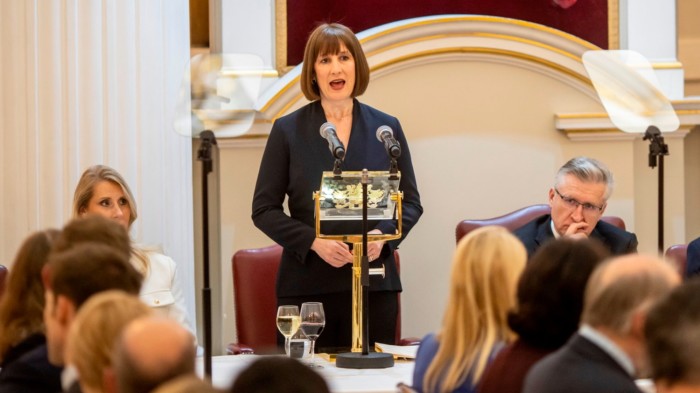Stay informed with free updates
Simply sign up to the Workplace pensions myFT Digest — delivered directly to your inbox.
Chancellor Rachel Reeves is expected to announce a shake-up of UK pensions in her Mansion House speech on July 15, including plans to look at the amount companies and their staff set aside for retirement.
Two executives familiar with her plans said Reeves would appoint a commission to lead the long-awaited review into pensions adequacy, looking at auto-enrolment rates alongside the state pension and retirement savings of the self-employed.
The review was first announced by Reeves in July last year and was supposed to launch by the end of 2024, but was put on hold after an angry backlash against her autumn Budget, which hit employers with a £25bn rise in National Insurance contributions.
The government is said to be acutely aware that there could be another hostile reaction if further burdens are placed on employers. However, the chancellor has long been of the view that the UK pensions industry is ripe for reform.
In May, the government said its review of retirement adequacy would focus on how to improve outcomes for “future generations of pension savers”.
Pensions minister Torsten Bell said at an event hosted by the Institute for Fiscal Studies on Wednesday that auto-enrolment rates would not rise during this parliament, indicating that some changes resulting from the review may take several years to implement.
Under current auto-enrolment rules, staff must pay at least 8 per cent of qualifying earnings into their workplace pension each year, at least 3 per cent of which must come from employers’ contributions.
But many experts believe such rates would leave many people without adequate retirement incomes.
The Institute for Fiscal Studies said in a report published this week that almost 40 per cent of private sector workers would face a financial cliff-edge in retirement under current contribution levels.
The study projected that half of middle- and high-earning private sector employees were not on track to reach their “target replacement rate” — a benchmark for avoiding large falls in living standards when they retire.
The lack of pension saving among the self-employed means that as many as two-thirds are projected to fall below Pensions UK trade group’s “minimum standard”, defined as a post-tax income of £13,400 a year per person, or £21,600 for a couple, for most pensioners.
The government’s pensions adequacy review is also expected to look at the state pension, which is £230.25 per week, or £11,973 a year, paid to those who have made 35 qualifying years of national insurance contributions.
Under the so-called triple lock, it increases every year by consumer price rises, average earnings growth or 2.5 per cent, whichever is highest, in a policy introduced by the 2010 coalition government to ensure the state pension stays in line with living costs.
The government has vowed to protect the triple lock, despite Bell arguing for it to be replaced in his previous role as chief executive of the Resolution Foundation think-tank. He said at the time it was “not a sensible mechanism for pensions uprating” and it should be consistent with working age benefits.
The Department for Work and Pensions declined to comment and the Treasury did not respond to requests for comment.
https://www.ft.com/content/fe3007ca-2e72-4262-a79d-5a499da172c3


